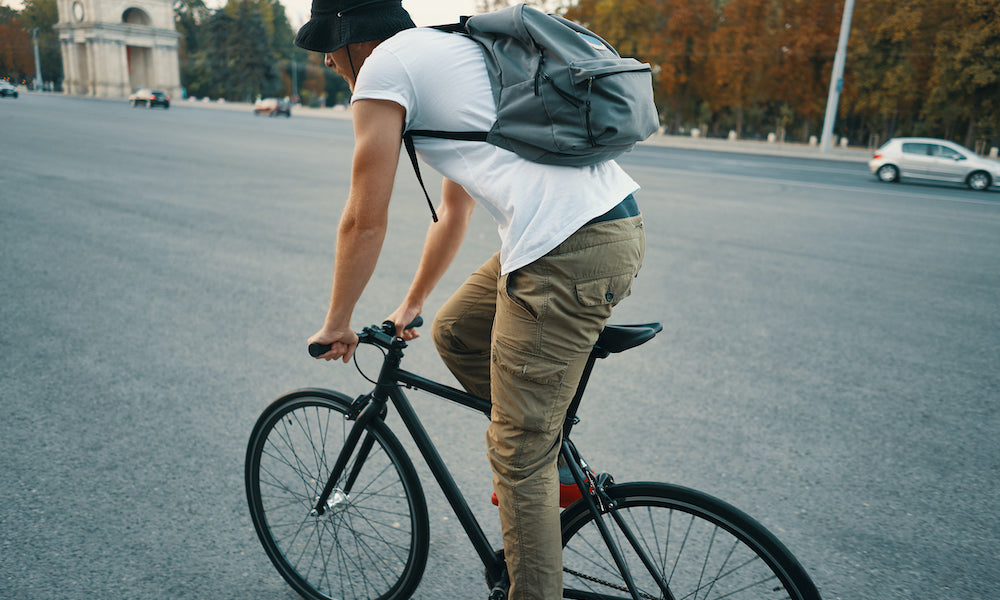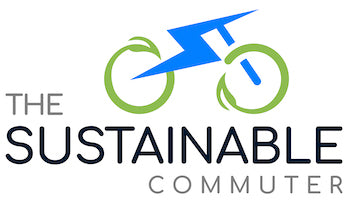
Green Commuting: Tips and Accessories for Sustainable and Comfortable Cycling to Work
Share
In recent years, the need for sustainable transportation solutions has become increasingly urgent. Green commuting is a practice that can help reduce carbon emissions and promote a healthier environment. Cycling to work is an excellent way to engage in green commuting, providing a sustainable and affordable transportation solution that offers health benefits. This blog post will discuss tips and accessories for sustainable and comfortable cycling to work.
Tips for Sustainable Cycling to Work
Cycling to work offers several benefits, including cost-effectiveness, sustainability, and health benefits. However, some challenges are associated with cycling, including odor, over-exhaustion, and hygiene. Here are some tips for sustainable cycling to work:
Benefits of Cycling to Work
1) Cost-effectiveness
Cycling is a cost-effective mode of transportation as it does not require fuel, insurance, or expensive maintenance. By cycling, individuals can save money on transportation costs.
2) Sustainability
Cycling is a sustainable mode of transportation as it does not produce any emissions and does not contribute to air pollution. It is a great way to reduce one's carbon footprint and promote a more sustainable future.
3) Health benefits
Cycling is a low-impact form of exercise that can improve cardiovascular health, boost mental health, and reduce stress levels. By cycling to work, individuals can incorporate physical activity into their daily routines.
4) Time-efficiency
In some urban areas, cycling can be faster than driving or taking public transportation, particularly during rush hour. Cycling can also offer a more direct route to one's destination, avoiding traffic and detours.
5) Convenience
Cycling offers the convenience of parking close to one's destination and avoiding the hassle of finding parking or dealing with public transportation schedules.
Ways to Prevent Odor and Over-exhaustion When Cycling to Work
1) Wear moisture-wicking clothing
Moisture-wicking clothing is designed to pull sweat away from your skin, helping to keep you dry and odor-free. Look for clothing made of materials like bamboo, merino wool, or synthetic fabrics with moisture-wicking properties.
2) Shower or wipe down
If you have access to a shower, take a quick shower after your ride to freshen up. If you don't have access to a shower, bring some wipes or a towel to wipe down your body and remove any sweat or dirt.
3) Use antiperspirant or deodorant
Apply an antiperspirant or deodorant before your ride to help prevent sweat and odor. Look for antiperspirants or deodorants specifically designed for sports or active lifestyles.
4) Bring a change of clothes
If possible, bring a change of clothes to change into once you arrive at your destination. This can help you feel fresh and clean after your ride.
5) Pace yourself
When cycling to work, pace yourself and take breaks if necessary. This can help prevent over-exhaustion and make your ride more enjoyable.
6) Stay hydrated
Make sure to drink plenty of water before, during, and after your ride to prevent dehydration and help regulate your body temperature.
7) Stretch before and after your ride
Stretching before and after your ride can help prevent muscle soreness and fatigue, making your ride more comfortable.
Maintaining Good Hygiene While Cycling to Work
Cycling to work can present some hygiene challenges, such as excessive sweating and odor. Here are some tips for maintaining good hygiene while cycling to work:
- Use a backpack or pannier: Carrying your work clothes, laptop, and other items in a backpack can cause excessive sweating and odor. Instead, carry your items with a backpack with a breathable back or a pannier.
- Protect your skin: Cycling in the sun can lead to sunburn, which can cause dry and flaky skin. Protect your skin by applying sunscreen with at least SPF 30 before your ride. You can also wear sun-protective clothing, such as a long-sleeved shirt and a wide-brimmed hat.
- Keep your helmet clean: Your helmet can trap sweat and bacteria, which can cause an unpleasant odor. Clean your helmet regularly with a damp cloth and mild soap or detergent. You can also use an anti-bacterial spray to keep your helmet clean and odor-free.
- Use a cycle-specific hygiene kit: Several cycle-specific hygiene kits are available, including wipes, deodorant, and a toothbrush and toothpaste. These kits can help you freshen up throughout the day if necessary.
- Choose breathable clothing: Choose clothing made of breathable materials, such as cotton or bamboo, to help prevent sweating and odor. Avoid wearing tight-fitting clothing that can trap sweat and bacteria.
Accessories for Sustainable Cycling to Work
Adding accessories to your cycle can improve your comfort, safety, and convenience while cycling. Here are some popular accessories you may want to consider:
- Lights: Adding lights to your cycle can improve your visibility and safety, especially when cycling at night or in low-light conditions. Look for lights that are bright and have multiple settings.
- Mudguards: Mudguards, also known as fenders, can help protect you from getting splashed with water or mud while cycling in wet conditions. They can also help keep your clothing clean.
- Locks: Adding a lock to your cycle can help prevent theft and protect your investment. Look for a lock that is sturdy and easy to use.
- Baskets or panniers: Adding a basket or pannier to your cycle can provide additional storage space for your items, making it easier to carry your work clothes, groceries, or other essentials while cycling.
- Water bottle holder: Adding a water bottle holder to your cycle can make it easier to stay hydrated while cycling. Look for a holder that is easy to access while riding.
- Cycle computer: Adding a cycle computer can provide you with valuable information about your ride, including distance traveled, speed, and even heart rate. Look for a computer that is easy to install and use.
- Bell or horn: Adding a bell or horn to your cycle can help you alert other cyclists, pedestrians, or motorists of your presence and improve your safety. Look for a bell or horn that is loud and easy to use.
Final Thoughts
Green commuting is an important practice that can help reduce carbon emissions and promote a healthier environment. Cycling to work is an excellent way to engage in green commuting, providing a sustainable and affordable transportation solution that can also offer health benefits. By following the tips and adding accessories discussed in this blog post, you can make your cycling experience more sustainable, comfortable, and enjoyable.
